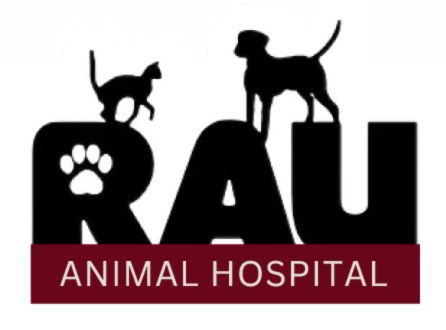It’s human instinct to protect our most valued possessions. We lock our homes when we’re away, set our car alarms at the shopping mall, keep our wallets secure and our kids glued to our sides. As veterinarians, we know that dogs are among an owner’s most valued possessions (nay, family members!), and they’re fiercely protective of them when it comes to the neighbor’s aggressive dog or lurking predatory animals. However, dog owners often fail to realize that their fellow humans are also a threat.
Dognapping is a prevalent problem in the U.S., with millions of dogs (and cats) stolen each year. If there’s a silver lining to Lady Gaga’s recent dognapping ordeal, it’s that it shined a light on this increasing problem. Much like the famed musician’s experience, dognapping often occurs with high-value breeds such as English bulldogs and French bulldogs, and small breeds including Chihuahuas and Yorkshire terriers since they are easy to handle in a quick theft situation.
Be Aware of Common Mistakes
Many dog owners unknowingly put their canines at risk, with everyday actions that seem innocuous, making it easy for dognappers.
Some of the common mistakes pet owners make that make pet-napping possible are as follows:
Bringing Your Dog on Errands
It might seem like you’re doing your dog a favor by taking them out with you for a quick run into the grocery store or dry cleaners instead of leaving them home alone, but a seasoned thief won’t hesitate to break a window for the payday they see inside. While this happens most often after dark, it’s not unheard of to go down in broad daylight.
Leaving Your Dog Outside
Perhaps you’re on a conference call or busy cleaning, and it’s more convenient to let your dog outside rather than take them for a walk. Unfortunately, it’s far too easy to get distracted and fail to check on them every few minutes, which can be disastrous even if the dog is disciplined to stay in the yard or trained with an invisible fence. Dog thieves are always looking for opportunities and have mastered the art of luring dogs away from their yards. So even when you’re enjoying the privacy of your own property, the threat is always there.
Not Remaining Alert While Walking
It might be tempting to walk your well-behaved dog without a leash and give them the freedom they so desire, but this makes you an exceptionally easy target for dognappers. Even with a leash, failing to be aware of your surroundings – such as a suspicious vehicle or fellow walkers a little too close – can lead to the unthinkable.
Posting a ‘Beware of Dog’ Sign
Some dog owners post these signs for legitimate reasons if their dog has aggressive tendencies or reacts negatively to visitors. Others post them to be funny, as the hesitant UPS delivery man is greeted by a tiny Pomeranian who wants to play versus the large attack dog they expected. Regardless, it’s a big shout-out that a dog (read: potential payday) lives there.
Outsmarting Dognappers
Fortunately, you can do plenty of things to make yourself less of a mark when it comes to dognapping. Four practical action items to prevent dognapping are as follows:
1. Microchip Your Dog
Ensure your dog is microchipped, with all your current contact information on file with the service provider. An unsuspecting new owner could very likely request that their veterinarian checks for a chip in their newly-adopted pet to see if it’s already been done. A chip already registered to someone else – especially someone who reported the dog missing or stolen – is a red flag that will prompt questions about the origins of the dog. Many stolen dogs have been recovered this way. In fact, the AVMA backgrounder on animal microchipping notes that owners are more likely to be reunited with microchipped pets than animals with no chip. "The AVMA cited a study reporting that owners’ searches only located their dogs 13 percent of the time, while 'the detection of a microchip by an animal shelter yielded a 74.1 percent rate of return to owner.'"
2. Spay or Neuter Your Dog
Dognappers most often intend to sell your dog, sometimes to a high-paying puppy mill or backyard breeder. Stolen dogs discovered to have been spayed or neutered after the theft are often discarded at local shelters, rescues, or left to roam until found. If your dog is altered, they’re more likely to be back home safe and sound simply because they were of no value to the thief.
3. Be Selective with the Information You Share
If you own a high-value, purebred, or small breed dog, think twice before sharing your favorite spots, neighborhood, or walking route with the friendly person sharing the bench at the dog park. Pet thieves will do their homework for the easiest opportunity before taking the risk of dognapping. Some social media sites can provide easy access to this information as well.
4. Report Suspicious Vehicles
A common strategy of dognappers is to search neighborhoods during the day for dogs, then return at night when it’s easier to steal them. Most dog owners will let their dogs outside one last time at night to relieve themselves before bedtime, which is prime time for a dognapper who discovered your dog earlier in the day to snatch them up. Reporting a suspicious vehicle is never a bad idea – for the safety of neighborhood children, dogs, and homes. Trust your instincts. The Nextdoor app is a good place for neighbors to share messages of concern about unfamiliar cars lingering in the area. It’s better to be safe than sorry.
Dognapping falls under the category of things a dog owner likely doesn’t worry too much about. Staying on top of vaccinations, wellness visits, parasite prevention, and grooming take priority for nearly all of them. As veterinarians, we’re glad that wellness and preventive care are priorities for you but, with the increase in incidents, we’d love it if you’d add keeping a watchful eye to that list—especially if you have a French Bulldog or the like.
If your dog has gone missing, first report it to local humane societies and shelters. Next, alert your veterinarian and trusted neighbors and friends. A call to the police station is also a good idea. If your dog is microchipped, alert the company in case they receive a call about a found dog. Finally, if you’d like more tips on how to keep your furry friend safe from dognapping, don’t hesitate to give us a call.

